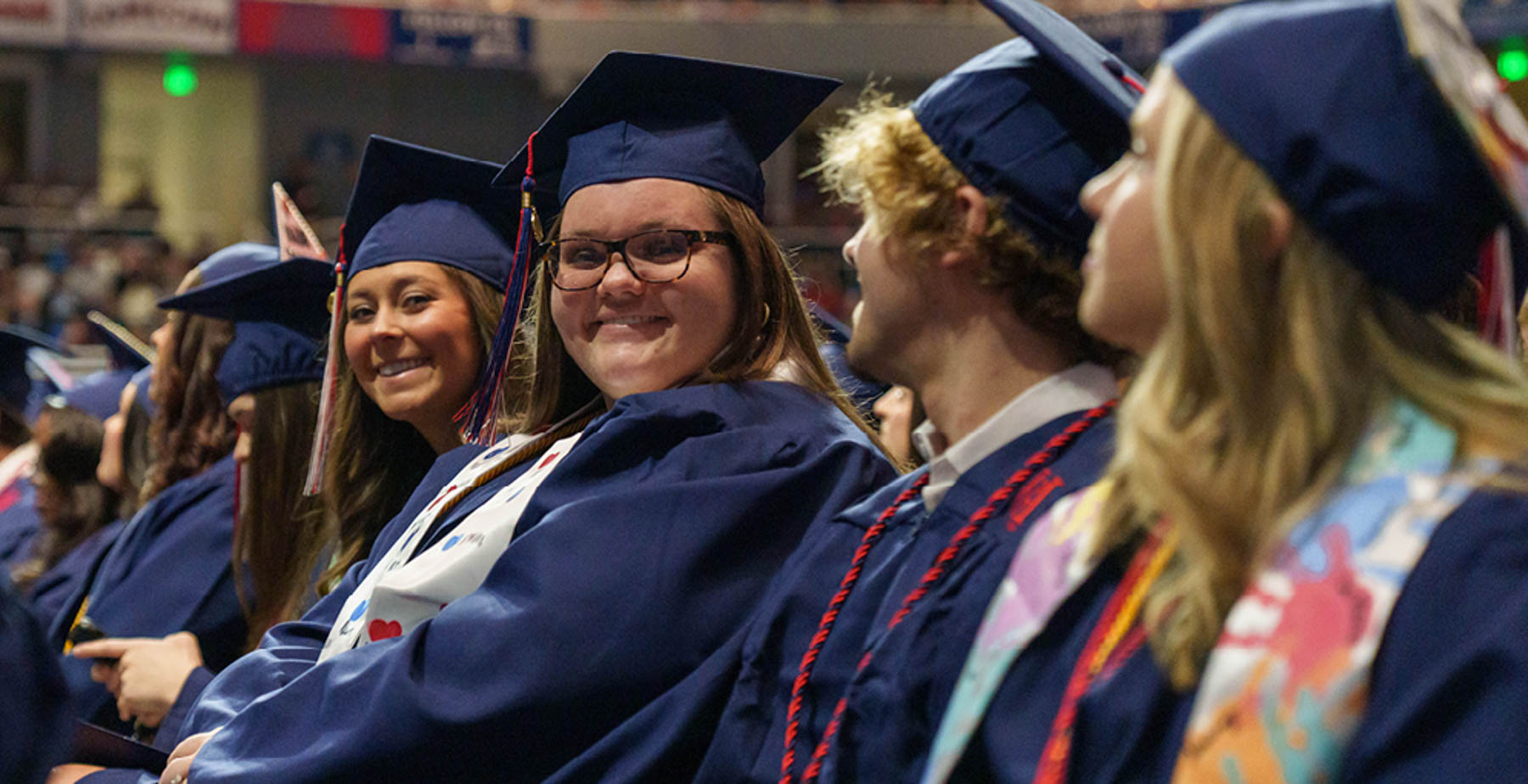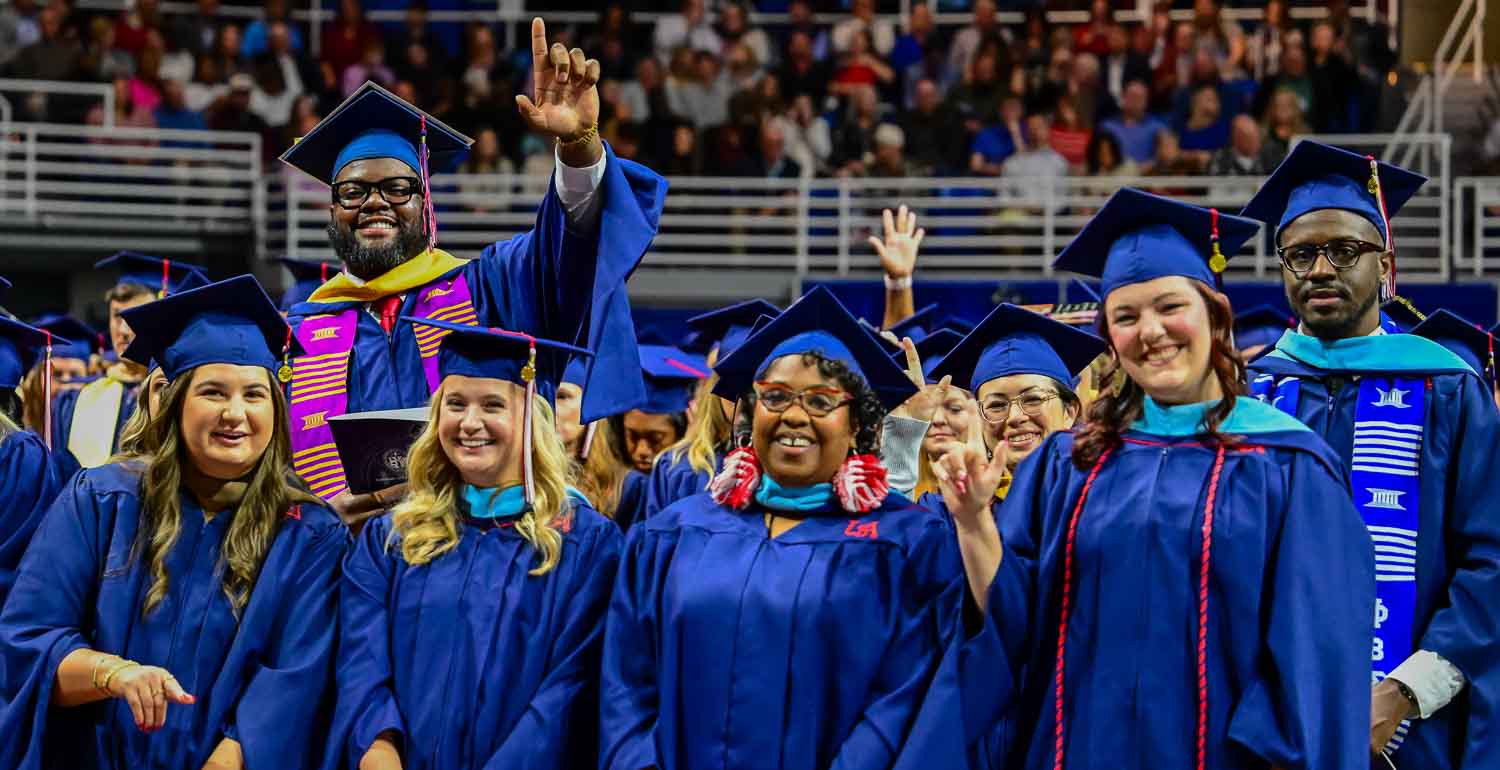From Lab to Field, 'Every Day, I’m Learning Something New.”
Posted on July 22, 2025

Ask Grace Barrentine about her dream job. When she answers, you may pause for a minute to wonder if it’s real. She wants to dive for history, to explore shipwrecks and other underwater artifacts.
She’s working on land right now, but she’s getting closer.
At 23, Barrentine is the youngest member of the team at Wiregrass Archaeology. The cultural resource management firm sends her traveling across the Southeast — some weeks in muddy fields, others in the lab, where she carefully logs and analyzes soil and the occasional fragments of the past embedded in it. The job is equal parts adventure and science, sometimes with a side of heartbreak.
Growing up in Woodstock, Alabama, just five minutes from Tannehill Ironworks Historical State Park, Barrentine spent her vacations diving; her whole family was scuba-certified. She came to the University of South Alabama with dreams of marine biology and saltwater fieldwork. It wasn’t quite what she’d imagined.
“I quickly realized I was terrible at chemistry,” she said. “I just wasn’t connecting.”
Around that time, she struck up an intriguing conversation with an archaeologist while working as a server in a downtown Mobile restaurant. At South, she had just taken Intro to Archaeology with Dr. Phil Carr and fallen in love with the field.
Barrentine immediately changed her major to anthropology. Before long, she was volunteering at South’s Center for Archaeological Studies, sorting artifacts from the I-10 Mobile River Bridge Project. What started as a few hours a week quickly evolved into a part-time job.
With Wiregrass, she’s now knee-deep in what is known as Phase I survey work, the foundational assessment that helps determine whether proposed new construction can move forward legally. It’s meticulous, muddy and often misunderstood.
“People will walk by and say, ‘So what are y’all doing? What’s the purpose of this?’” Barrentine said. “I explain: They want to build here, and it’s a federally funded project, so we have to do a cultural resource survey before they can build.”
The process involves shovel testing — digging small, systematic holes every 30 meters across a proposed development site, mapping them with GPS on tablets, logging soil profiles and photographing everything.
“You dig until you hit subsoil. It might be 30 centimeters. It might be three feet,” she said. “Then you document the soil, layer by layer. We’re looking for things like Native American pottery or chert flakes — what’s left over from making arrowheads.”
Sometimes they find nothing. Sometimes they find history. And sometimes, she said, they have to sacrifice personal sentiments to finish the job.
“I remember this one site in Pelham,” she recalled. “It was beautiful — creeks, wildlife everywhere. We went out, surveyed, talked to the landowner. We came back the next day – bulldozed. Gone. It’s the most challenging part of the job. You love nature. You love history. And you’re standing in the middle of it being erased.
“There’s no perfect outcome. But at least we try to preserve and document what we can.”
Despite the challenges, Barrentine lights up when she talks about work. She’s still involved with Dr. Carr’s lab at South and still diving whenever she gets the chance.
Her long-term dream is to earn a master’s in maritime archaeology — ideally in Australia — with a focus on shipwrecks. And after that, she hopes to move to St. Croix in the U.S. Virgin Islands to work alongside Dr. Alexandra Jones, a renowned archaeologist who confirmed that the islands are in desperate need of professionals like Barrentine.
But for now, she’s living in Mobile, working hard and soaking up every moment.
“Some days I’m in the lab, some days I’m in the field,” she said. “Every day, I’m learning something new.”
Her advice to students: Take a class that’s off the beaten path. Volunteer. Talk to people on and off campus. That one conversation could change everything. And maybe, just maybe, consider scuba certification. You never know what lies just beneath the surface.





